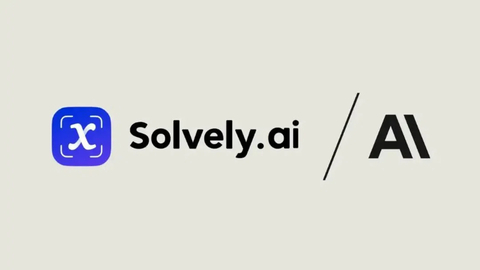
Solvely's Rapid Rise: Unveiling the New Blue Ocean in AI Education Overseas
In this era where everything can be AI, education is no exception. Driven by multiple demands such as intelligent and personalized learning experience, AI Teacher, artificial intelligence and the education industry are engaged in a grand two-way race.

According to Grand View Research, the global AI education market is expected to be worth $5.88 billion in 2024 and is expected to reach $32.27 billion by 2030, with a compound annual growth rate of 31.2%.
Intelligent tutoring systems, chatbots, AI problem-solving tools, AI teaching products...a series of AI education products have emerged, redefining people's learning life.
With the accelerated explosion of global market demand, a number of brands have stood at the forefront of AI education overseas. These include traditional education platforms such as Yuanfudao and Zuoyebang, as well as cross-border giants such as ByteDance.
As this trend intensifies, more and more emerging brands are emerging as dark horses. One of them is an AI problem-solving app called Solvely, which has surpassed a number of big brands and has become popular, dominating the download lists of education apps in many countries.
How much room for imagination does AI education have in this overseas market, which may be relatively unfamiliar to many overseas businesses? We can get a glimpse of this from Solvely's overseas story.
User-oriented product strategy
NetMarvel data shows that among the rank 100 AI applications downloaded worldwide in May 2025, educational AI applications accounted for 17%. Among them, Solvely performed the second to none, with downloads soaring 153.6% month-on-month, ranking 17 on the AI application revenue list, and App reaching 15 million US dollars.
The author learned that Solvely was founded in 2023 by a Hong Kong, China company called Caribbean Panda. According to the data of the Top Lean AI Native Companies ranking, the company once generated an annual revenue of US$6 million with a team of 4 people.
Since its establishment more than two years ago, Solvely has served more than 5 million students in more than 120 countries around the world.
Without the support of a big company, how did Solvely stand out in the increasingly competitive AI education market? In fact, the answer is not complicated: user-oriented product development strategy.
Solvely is positioned as an AI problem-solving tool that integrates problem-solving, Q&A, and personalized AI tutoring. Due to the differences in cultural environments in different countries, Solvely initially chose to start with math and science subjects in primary and secondary schools, and then extended to humanities subjects such as English, literature, and history, and further expanded to professional exams such as SAT and GRE.
Solvely's product development strategy can be specifically summarized into two levels.
The first is breadth, which is to gradually upgrade to an AI education app covering all disciplines and stages, targeting not only students of all ages from elementary school to graduate students, but also parents, educators and tutoring institutions, comprehensively penetrating the learning needs of all age groups and gradually expanding the user circle.
The second is accuracy. Solvely knows that accuracy is the core demand of users for problem-solving apps, so it has made in-depth research and innovations on the technical level, integrating advanced large models such as GPT-4, Claude 3, and Gemini, so that it can accurately understand and answer various problems. Official website data shows that Solvely's overall accuracy rate has reached 90% so far.
Not only that, Solvely also integrates multiple learning platforms such as Canvas, Blackboard, Moodle, etc., further enhancing the functionality and versatility of the App, thereby providing users with a more complete learning experience.
In terms of functional expansion, Solvely also closely anchors the needs and experience of users: first, it is efficient and convenient, and second, it is comprehensive and detailed.
The usage process of Solvely is very simple. Users do not need to manually enter complex formulas. They only need to take a photo of the question and upload it. The system AI will immediately process the image and give the answer within a few seconds. This is also the common design of AI education apps at this stage.
However, in order to differentiate itself from the numerous similar competing products on the market, Solvely has designed more diversified APP functions: providing step-by-step problem-solving ideas and intelligently guiding users to truly understand and absorb knowledge.
Specifically, Solvely provides detailed and easy-to-understand explanations for each question, making it easier for students to grasp complex concepts. At the same time, it can also provide in-depth answers to some problem-solving steps, guiding users to think and even draw inferences from one example, greatly enhancing the interactivity and flexibility of the learning experience.
Create a personalized user experience
As the generative AI wave sweeps across the country, the popularity of AI education apps is increasing day by day. According to a Microsoft survey, 62% of students have used AI tools to assist learning at least once or twice.
The rapid development of the AI education industry has also further driven the continuous upgrading of user demand: creating an interactive, immersive and customized learning environment for students through artificial intelligence is becoming a general trend.
Solvely has also keenly observed this trend. Currently, AI education apps still have certain limitations. The biggest problem is that they are not humane enough. It is difficult to provide timely feedback, in-depth guidance and comprehensive answers like a real teacher. In most cases, AI is more like a tool that simply instills answers. Users know that this is right, but they don't understand why they should do so.
Based on this, Solvely designed the App functions to be more "humane", taking into account the users' personalized learning needs like a real teacher.
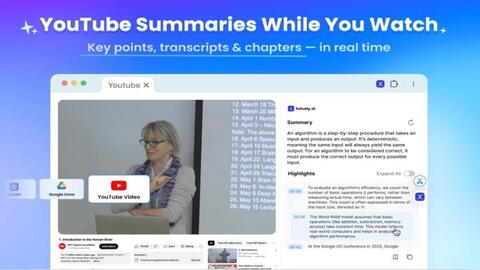
Solvely co-founder once said that the education system faces challenges in terms of talent supply. Although schools spend half of their budget on teacher allocation, personalized education is still out of reach for most students.
Solvely was founded to break down barriers to personalized education and create an AI learning partner for students of all ages. The focus is not on providing answers, but on guiding students to follow the problem-solving process, truly understand knowledge, and expand their knowledge.
The author learned that Solvely has integrated multiple advanced models on the technical side, allowing the App to achieve real-time interactive visualization and communicate with users like real people.
In order to provide a more comprehensive personalized, immersive learning environment, Solvely has adopted a step-by-step functional strategy.
The first step is to target basic needs and become an understanding-based homework tutor: The App's "learning mode" will analyze and guide students through each solution step by step like a tutor, thereby cultivating students' true understanding ability.
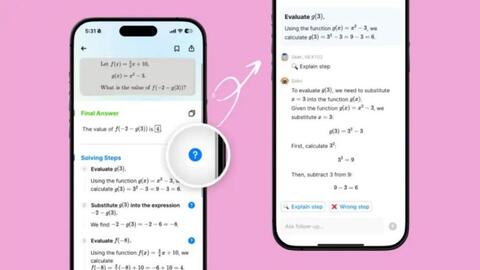
The second step is to strengthen the interactive experience. Solvely tracks students' progress throughout the course and responds based on the conversation history. When students ask questions, they refer to past interactions to provide hints, review assignments, or recommend resources. Over time, Solvely also discovers students' academic and emotional strengths and weaknesses and provides corresponding suggestions.
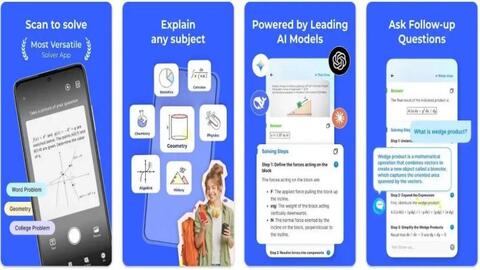
The third step is point-to-point customized help. Solvely's ambition is not only to use AI to generate knowledge, but also to stimulate users' thinking energy and maintain their enthusiasm for learning. Based on this, Solvely has created an integrated learning system that integrates diversified functions such as smart readers, writing assistants, AI notes, focus mode and calculators to more comprehensively penetrate users' learning needs.
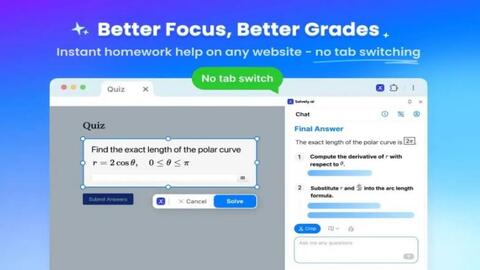
For example, Solvely uses the functional design of study guides, flashcards and quizzes to gamify the learning experience. Students no longer passively memorize, but learn content through fun interactions and instant feedback, thereby improving memory and making learning enjoyable. In addition, Solvely also provides exam preparation functions to adapt to each student's learning style and knowledge gap.
For many people, learning may be boring and tedious, while AI is cold and uninteresting. Solvely is unique in that it uses powerful technical capabilities to create a more efficient, convenient, personalized, and immersive learning experience for users of all ages.
Diversified marketing strategies to attract customers
The author learned that although Solvely has only been established for more than two years, its influence has increased rapidly. In a short period of time, it has become comparable to a number of overseas AI education apps such as Gauth and Question AI.
Solvely's mobile downloads have grown significantly in recent months, ranking among the upper part in many countries' App Stores, with over 1 million downloads on Google Play alone, 24,000 reviews and a 4.7-star rating.
Behind this, in addition to its own strong product power, of course, it is also inseparable from precise, diverse and up-to-date marketing strategies.
First of all, regarding advertising strategy, NetMarvel data shows that the types of advertising materials focused on Solvely mainly include text, pictures, and videos, of which pictures account for 32.2% and videos account for 26.3%. However, since the peak in January, Solvely's advertising efforts have gradually weakened in recent months.
It is worth noting that when ByteDance's AI education app Gauth was launched in early January, Solvely "took advantage of the opportunity" and vigorously promoted itself. It seized the opportunity to share the market, successfully ushered in a wave of user traffic peaks, and also achieved an increase in brand awareness.
In order to improve traffic monetization capabilities, Solvely adopts a flexible and diverse business approach.
After upgrading the App to professional mode, users can enjoy unlimited in-depth Q&A, interactive learning support, AI handouts, massive learning resources and other advanced features, thereby attracting more users and thus increasing commercial value.
Solvely also launched an invitation campaign, where users can generate personal invitation in the app and share them with friends. After their friends successfully download the app, they can enjoy a 7-day. With this incentive mechanism, Solvely was able to quickly attract customers and continuously improve brand awareness.
In general, Solvely's marketing strategy focuses on advertising traffic and monetization, and stimulates user fission through various incentive mechanisms. To a certain extent, it helps it quickly open up the market and further expand the boundaries of its audience.
Conclusion
With the rapid development of artificial intelligence technology, generative AI represented by ChatGPT and Deepseek is creating a new pattern in all walks of life. More and more emerging markets such as AI glasses, AI trendy toys, and AI companion robots have emerged, redefining people's daily lives through deep interactions from functions to emotions.
Today, the trend of generative AI has also spread to the field of education overseas. AI education overseas apps represented by Solvely are relying on continuous innovation on the technical side and diversified upgrades on the functional side to create a personalized and efficient learning experience for students of all grades.
Giving AI vitality and making learning fun again is the biggest reason why Solvely stands out from a series of competing products.
You May Like
Online Master's Degree: A Comprehensive Guide and In-depth Reflections
More people are choosing online master's degrees due to their advantages and conveniences. online master's degrees eliminate geographical constraints, providing access to quality education globally. Their flexibility allows students to balance studies with work and personal life.
Empower Your Career: Why Take a Business Management Course Online?
Online business management courses are gradually becoming an important way for people to improve their skills and knowledge. Online business management courses have emerged as a pivotal tool for professionals looking to not only solidify their current position but also to propel their careers to new heights.
Digital Nursing Education – Transforming Healthcare Training for the Future
Digital nursing education is emerging as a powerful tool to meet these growing demands. By integrating e-learning platforms, virtual simulations, and AI-driven training tools, nursing education is no longer confined to classrooms and physical laboratories but is accessible anytime, anywhere.
Metaverse and Immersive Learning: Shaping the Future of Smart Education
The metaverse, a collective virtual shared space created by the convergence of virtually enhanced physical reality and physically persistent virtual reality, is poised to revolutionize education. By integrating technologies such as Virtual Reality (VR), Augmented Reality (AR), blockchain, and artificial intelligence (AI).
Vocational Education Transformed: How Digital Technologies Are Shaping the Future American Workforce
The smart era is reshaping American vocational education at its core, moving far beyond simply adding computers to classrooms. We're witnessing a fundamental transformation in how skills are taught, practiced, and valued in our economy.
Building Better Teams: How TalentLMS and 360Learning Empower Employee Growth
Digital learning platforms like TalentLMS and 360Learning are reshaping employee training through flexibility, collaboration, and smart learning tools-helping teams grow skills, boost productivity, and build a culture of continuous improvement.
Choosing SAT Tutoring and Prep Courses That Fit Your Score Goals
Explore SAT tutoring and prep courses that can help students improve scores efficiently. Learn how to choose the right local tutoring, compare options, and maximize test performance.
The Ultimate Guide to Online Learning Platforms: Which One Fits You?
In a world where growth and adaptability are key to personal and professional fulfillment, online learning has become an indispensable tool for acquiring new skills. Whether for a creative passion, career growth, or a new field, the right platform turns curiosity into competence.
2025 and Beyond: Emerging Trends Shaping the Next Generation of Online Learning Platforms
The landscape of digital education is evolving at lightning speed. The platforms of tomorrow will be less about simply hosting video lectures and more about creating immersive, personalized, and deeply engaging learning journeys.
The Social Classroom: Exploring Community and Collaboration on Modern Online Learning Platforms
Gone are the days when online learning meant sitting alone in front of a static video lecture. The digital classroom has evolved into a vibrant, interactive space where community and collaboration are at the heart of the learning journey.
Find Your Ideal Match: A Comprehensive Guide to Mainstream Online Learning Platforms
Feeling the urge to learn a new skill but overwhelmed by the choices? You're not alone! The world of online learning is vast and exciting. This guide will help you navigate the most popular platforms to find the one that perfectly fits your goals and learning style.
From Beginner to Pro: Mapping Your Skill Journey with Online Learning Platforms
The digital world is your oyster, and online learning platforms are the powerful tools to help you crack it open. Moving from a curious beginner to a confident pro might seem daunting, but with a clear map, the journey can be exciting and incredibly rewarding.